Celeriac
Celeriac is a root vegetable that belongs to the carrot family. Its genus is Apium. It is also known as celery root and is related to the common celery. The plant is mainly grown for the knobby root which is eaten as a root vegetable.
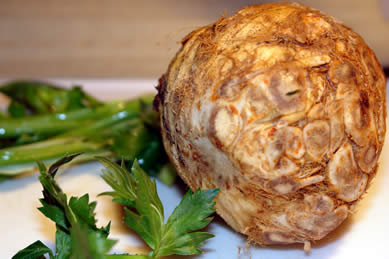
Celeriac
Table Of Content
Scientific Name
Scientific name for this vegetable is Apium graveolens var. rapaceum.
Description
Read a detailed description of this nutritious root vegetable in here.
Weight: Each of the root vegetables weigh approximately 1 to 2 pounds.
Size: They measure around 3 to 4 inches in diameter.
Color: The outer skin is pale white in color. The inner soft flesh is off-white colored like potato.
Smell: It does not have any distinctive smell of its own. However, if smelled from up-close then a mildly bitter potato like essence can be recognized.
Taste: The vegetable has a tinge of bitterness in it. Apart from that it is neutral in taste.
Leaves: The leaves look like celery but are not eaten. They are long and have hollow petioles.
Distribution
This root crop is extensively grown throughout Europe, Siberia, Southwest Asia, North America and North Africa. Nowadays this vegetable is exported throughout the world and thus available everywhere.
Origin
This root was recorded as an edible vegetable in the year 1623 for the first time. The vegetable was acknowledged in the 1600 BC after French botanists gave their recognition. It had been mentioned in the epic Odessey by Homer. Old documents prove that this vegetable was of immense medicinal and religious importance since ancient days in various civilizations around the world like Egypt, Greece and Italy.
Nutritional Value
Find out nutritional content in every 100gm of fresh celeriac.
| Nutrients | Amount | Percentage |
| Dietary Fiber | 1.8 g | 5% |
| Cholesterol | 0 mg | 0% |
| Total Fat | 0.30 g | 1% |
| Protein | 1.5 g | 3% |
| Carbohydrates | 9.20 g | 7% |
| Energy | 42 Kcal | 2% |
| Vitamin K | 41 µg | 34% |
| Vitamin E | 0.36 mg | 2% |
| Vitamin C | 8 mg | 13% |
| Vitamin A | 0 IU | 0% |
| Thiamin | 0.050 mg | 4% |
| Riboflavin | 0.060 mg | 5% |
| Pyridoxine | 0.165 mg | 13% |
| Pantothenic acid | 0.352 mg | 6% |
| Niacin | 0.700 mg | 4% |
| Folates | 8 µg | 2% |
| Potassium | 300 mg | 6.5% |
| Sodium | 100 mg | 6.5% |
| Zinc | 0.33 mg | 3% |
| Phosphorus | 115 mg | 16% |
| Manganese | 0.158 mg | 16% |
| Magnesium | 20 mg | 5% |
| Iron | 0.70 mg | 9% |
| Copper | 0.070 mg | 8% |
| Calcium | 43 mg | 4.3% |
| Lutein-zeaxanthin | 1 µg | |
| Crypto-xanthin-ß | 0 µg | |
| Carotene-ß | 0 µg |
Health Benefits
This nutritious root vegetable has various health benefits. Regular consumption is surely to do extreme good to the body in the long run.
- Celeriac contains high amount and many kinds of poly-acetylene anti-oxidants. Falcarindiol, falcarinol, methyl-falcarindiol and panaxydiol contents in this vegetable keeps the body cells very healthy.
- It is high in dietary fibers, thus keeps the digestion and metabolism healthy.
- Research shows that it contains anti-cancer agents.
- It also protects the body from colon cancer cells.
- This vegetable immunes the body against acute lymphoblastic leukemia.
- The high vitamin content in it improves immunity against common cold and cough.
- The vitamin K content enhances bone mass by increasing osteotrophic activities in the bones.
- Celeriac is suggested in regular diet of Alzheimer’s disease patients to keep from brain damage.
- The phosphorus content in this root vegetable is good for bones and teeth.
- The nutrients are also good for cell metabolism.
- The vegetable protects against anemia.
- It restores immunity and should be included in regular diet while recovering from ailment.
During Pregnancy
This root vegetable should be avoided during pregnancy. In case doctors specifically suggest having celeriac during this period, eat it in little quantity.
Allergy
Though it is a very nutritious vegetable but still some people might face some allergic or inconvenient conditions after consuming this vegetable.
- People who are allergic to celery should also avoid the root part or the celeriac.
- This root vegetable contains some furano-coumarin compounds, such as isopimpinellin, xanthotoxin, bergapten and psoralen. These compounds can be harmful to sensitive skin.
- People who are under medication for diuretic condition or coagulant condition should absolutely avoid this vegetable.
- Under general condition also, if anyone is allergic to any of the nutrients in this vegetable, they should avoid consuming it or should seek expert advice before consuming it.
Growing
Celeriac requires full sun and moist soil to grow. The soil should have a pH balance between 5.5 and 6.5. They grow well in organic matter enriched soil. Standing water might harm the crop so make sure that not much water is logged on the field but the soil still remains moistened.
Uses
Given its immense nutritional value, celeriac is widely consumed as edible and medicinal vegetable.
Edible Uses
- The root vegetable is eaten after boiling it in salt water.
- The leafy stalk of celeriac is, sometimes, boiled and eaten as seakale.
Medicinal Uses
- High cholesterol patients should include this vegetable in their regular diet. Being high in water soluble fiber, it lowers the cholesterol level.
- Heart patients should eat celeriac as this can reduce the risk of heart attack.
- This vegetable is suggested to people with urinary problems. The phosphorus content in it works wonder to such patient.
- People suffering from nerve related problems must include this vegetable in their regular diet.
Varieties
There are quite a few varieties of celeriac. Monarch, alabaster, prinz, bergers, kojak, snow white, white ball, anita dolvi, goliath diamant, giant prague, ofir and many more varieties of this root crop are available in the market.
Availability
The vegetable is available in any vegetable market and throughout the year. But the peak season of celeriac is from November till April.
Storage
Store the root in a fridge inside a plastic bag. This vegetable can be stored for a maximum period of one week.
Recipes
It is eaten in various ways across the world in various forms. The vegetable needs to be washed thoroughly in running water to get rid of the mud and soil. Then cut it into big pieces and peel the outer thick layer of skin with a big knife.
- Celeriac is eaten raw in salads.
- It is boiled and eaten as mashed potatoes.
- Many spicy curries are made with this root vegetable.
- It is also fried and eaten.
- It is grated raw over delicacies as garnishing.
- It is also cooked in soups and stews.
Substitute
Celeriac is sometimes used as a substitute of potatoes and vice versa.
Images
See the pictures of this nutritious vegetable below.
Reference:
http://en.wikipedia.org/wiki/Celeriac
http://recipes.wikia.com/wiki/Celeriac#Description
https://oureverydaylife.com/550702-easy-way-to-destring-celery.html
https://www.medicalnewstoday.com/articles/320374
http://www.livestrong.com/article/510441-signs-and-symptoms-of-a-celery-allergy/
- by anwiksha
- October 8th 2012

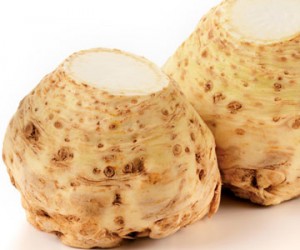
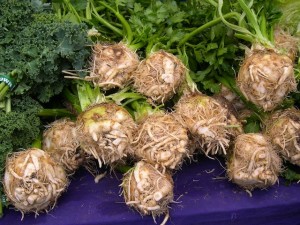
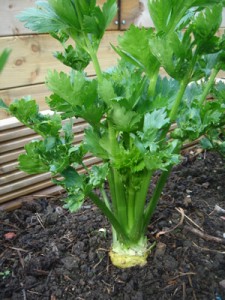
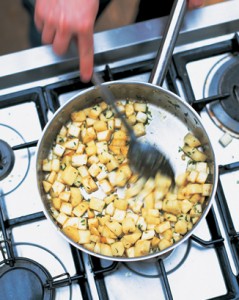
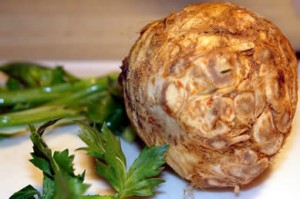
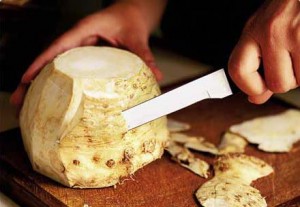
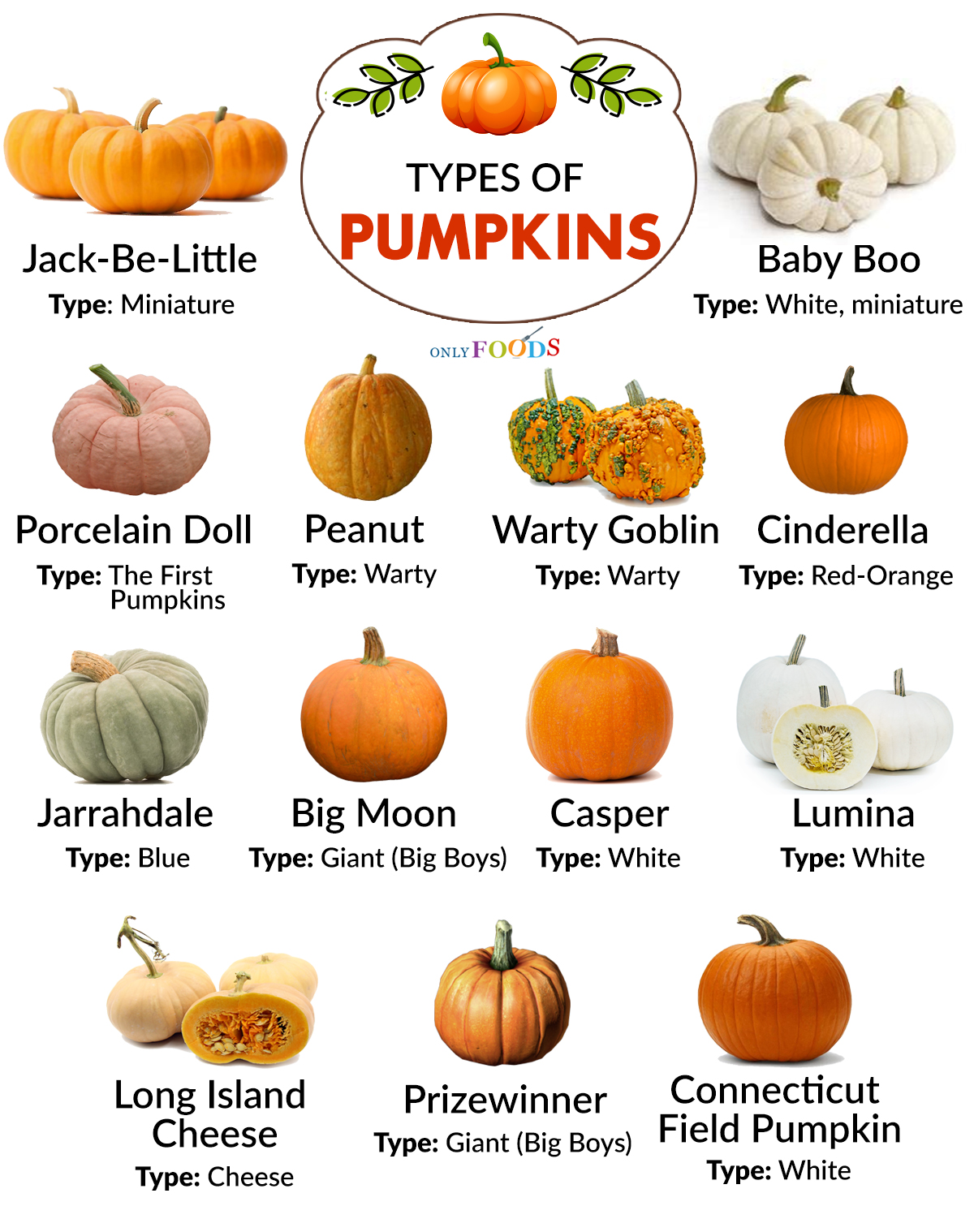
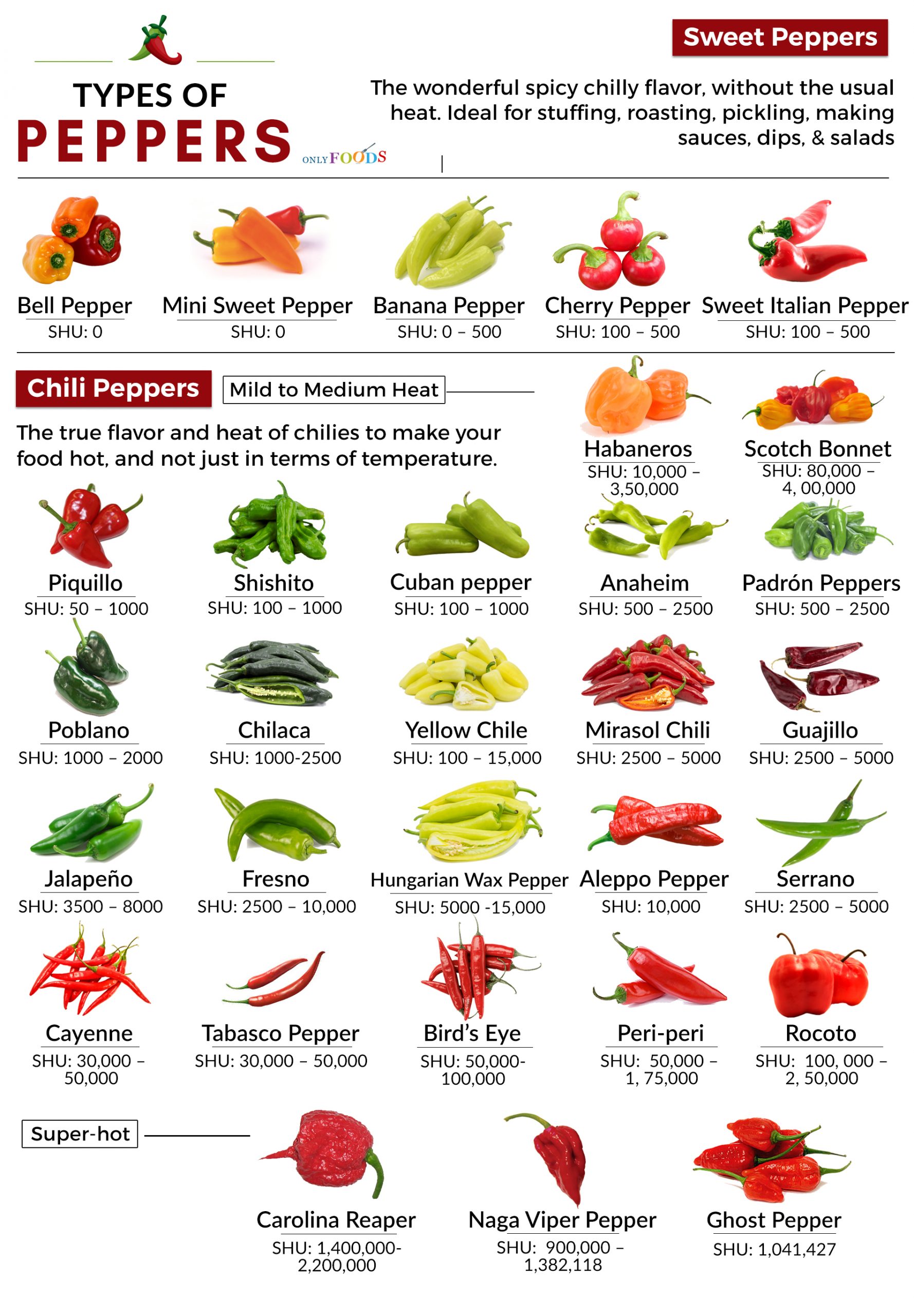
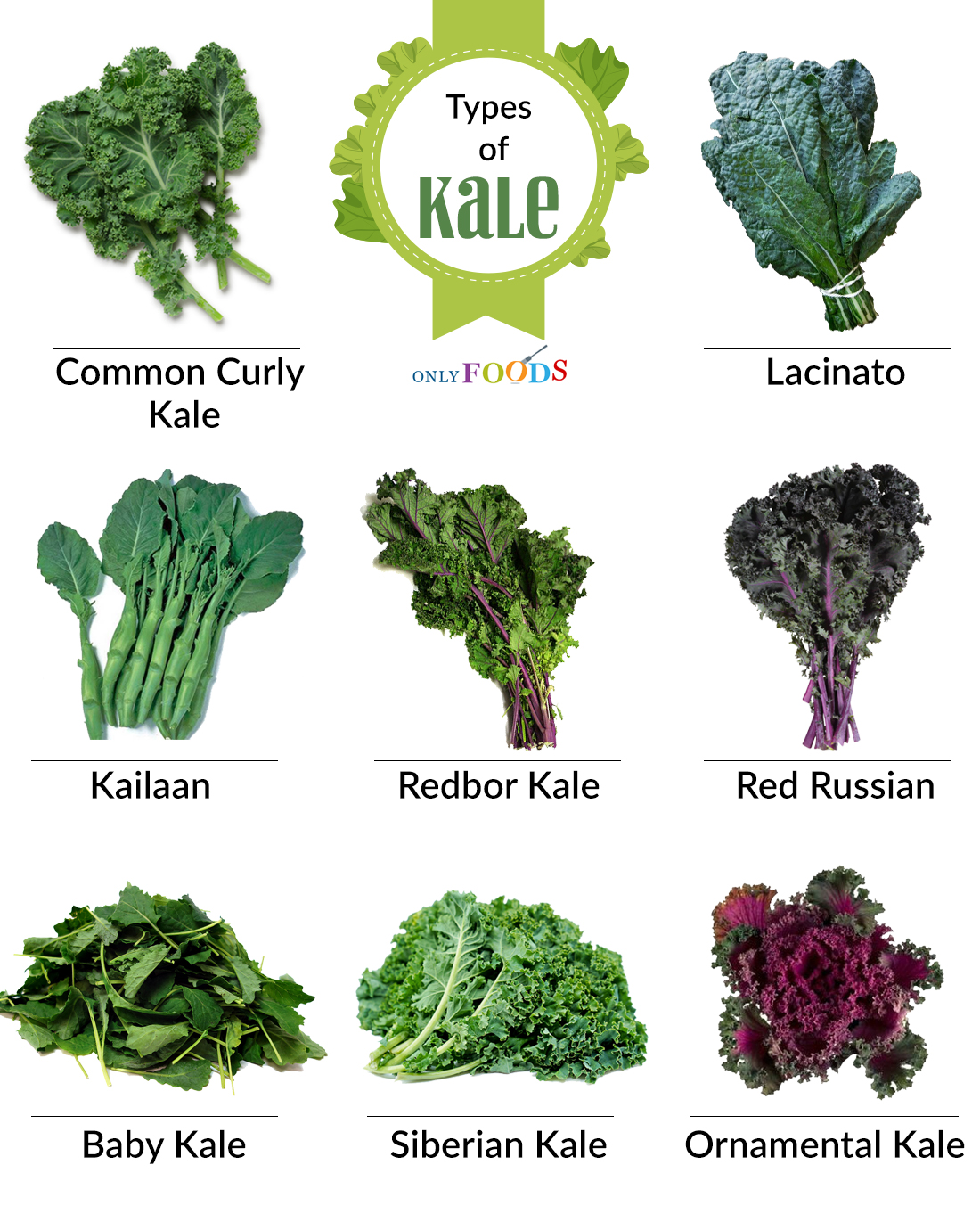
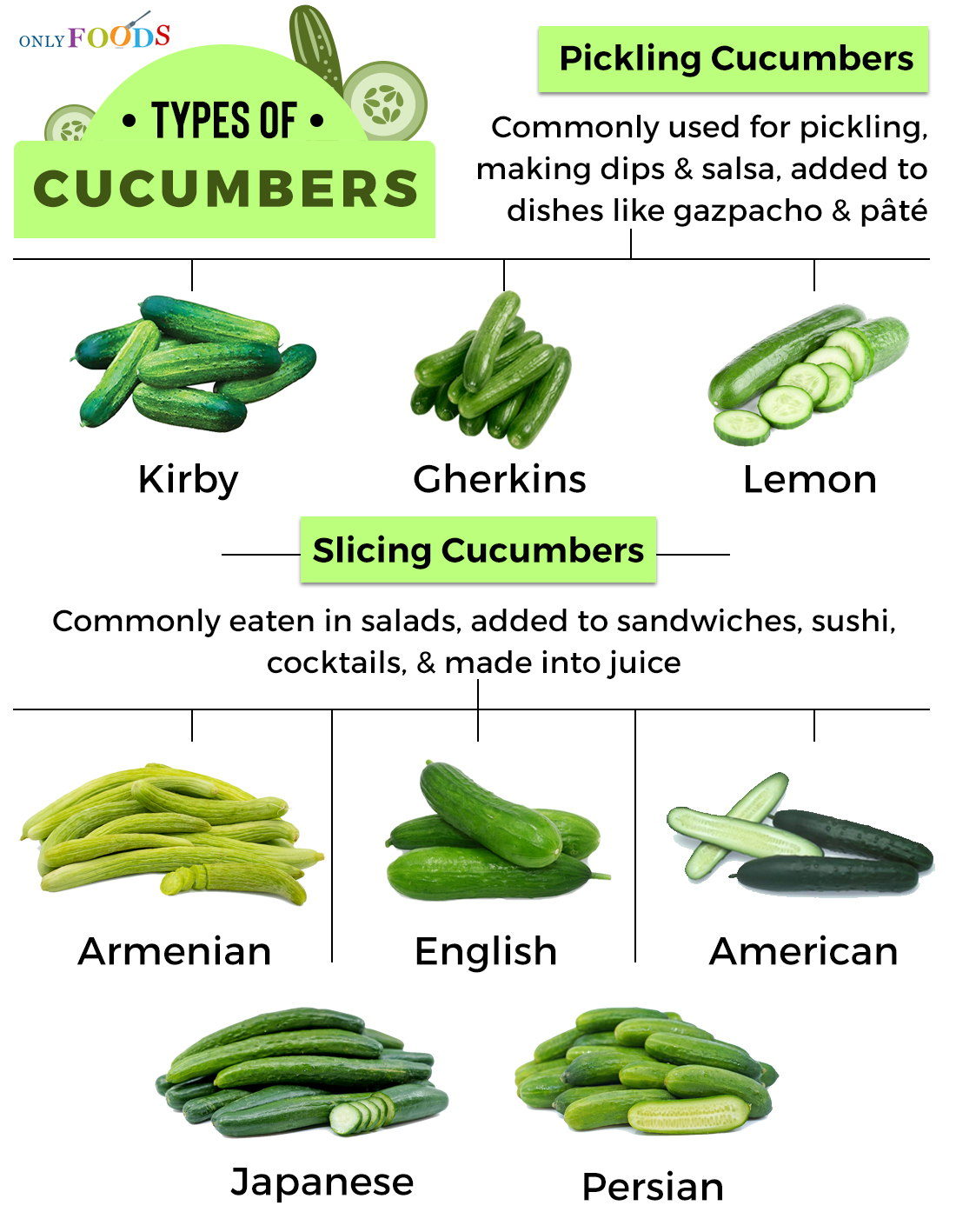















Leave a Reply